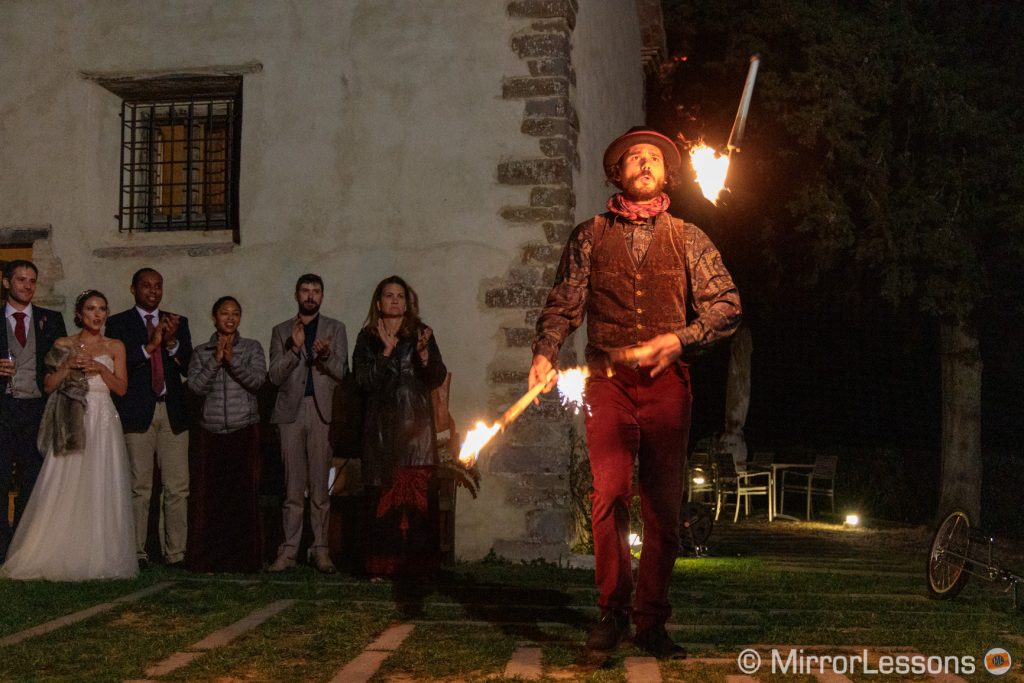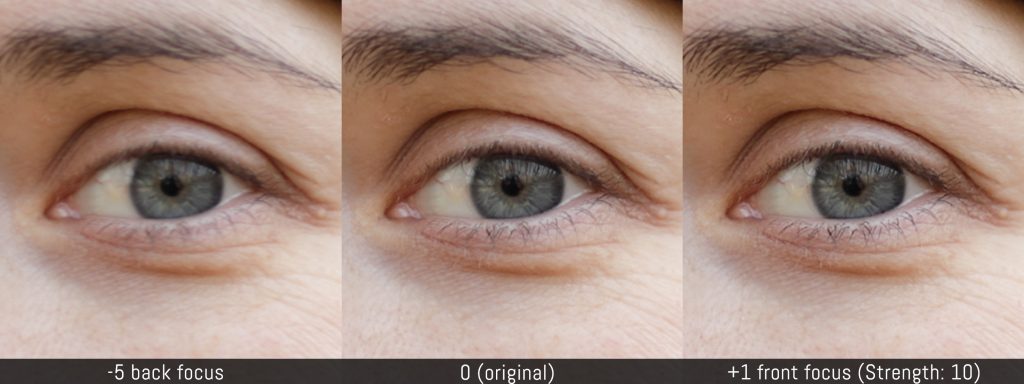The R7 is one of the first two APS-C mirrorless cameras from Canon with an RF-mount. It has interesting specifications for video, but also sports and wildlife, and comes at a competitive price.
The EOS R is four years older. It was the first full frame mirrorless camera released by Canon, and the one that launched the RF-mount system. Today, if you’re lucky, you can find it at a price not too dissimilar from the R7, so if you are wondering how the two compare, keep reading!
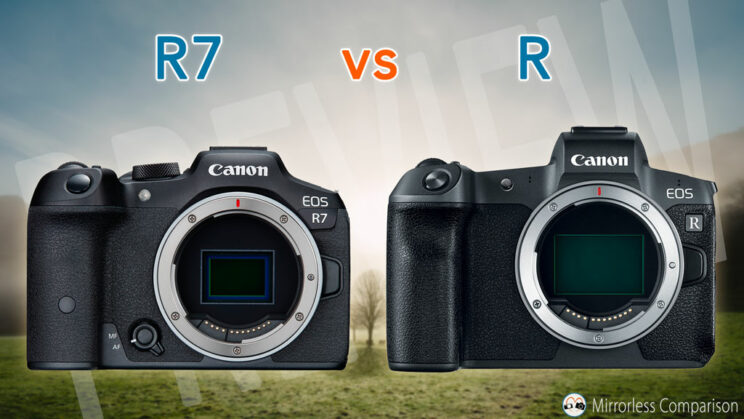
You might also be interested in:
Ethics statement: the following is based on our personal experience with the EOS R and official specs about the R7. We were not asked to write anything about these products, nor were we provided any compensation of any kind. Within the article, there are affiliate links. If you buy something after clicking one of these links, we will receive a small commission. To know more about our ethics, you can visit our full disclosure page. Thank you!
1. Image Sensor and Processor
The R7 features a 32.5MP APS-C sensor. It is a new version compared to the one found inside the older EOS M6 II, with revised micro lenses and circuitry to improve the performance.
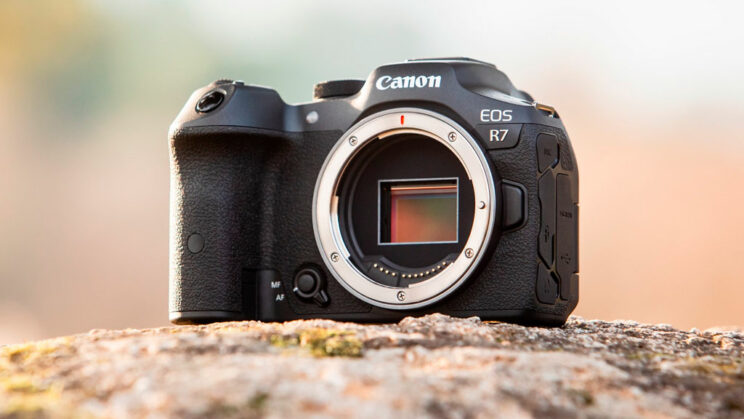
The EOS R comes with a 35mm format sensor (full frame) and has a similar resolution of 30.3MP. It is an old sensor (slightly updated), similar to that found on the 5D mark IV DSLR from 2016.
The sensor inside the ‘R’ model is larger than the one used for the R7, and the crop factor is 1.6x (for example, a 50mm lens will give you the same angle of view of a 80mm lens when mounted on the APS-C camera).
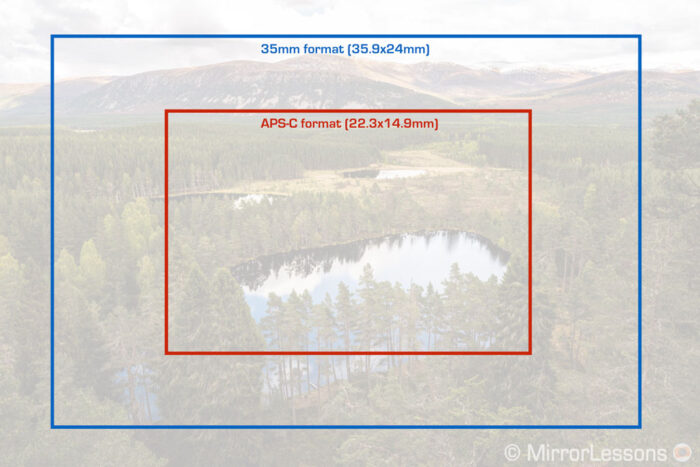
The EOS R has a slightly vaster ISO range, as you can see from the table below.
Normal range
Extended range
R7
100 – 32,000
100 – 51,200
EOS R
100 – 40,000
50 – 102,400
Another important distinction is the image processor. The R7 comes with the latest generation Digic X, which is much faster than the Digic 8 chip found in the EOS R, and explains the superior specs the APS-C camera has concerning speed and the electronic shutter.
Finally, the R7 can also record in the HEIF format (HDR) in addition to RAW and JPG.
2. Video capabilities
Both cameras offer 4K video, but the EOS R is more limited.
First, the R7 can record up to 60p, whereas the ‘R’ model is limited to 30p.
Second, the APS-C camera can record 4K 30p without sensor crop, and with oversampling from a 7K area to maximise image quality. At 60p, you can still record without a crop (but at a lower quality, i.e. no oversampling) or record with a heavy 1.8x crop.
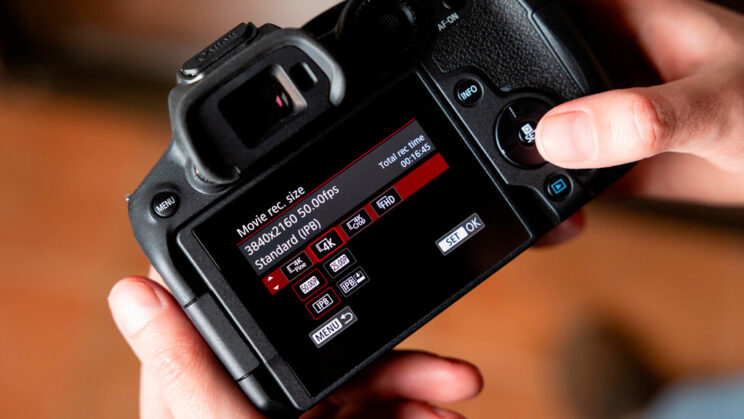
On the EOS R, activating 4K means dealing with a severe 1.8x crop on the sensor, and there is no way around it. To put that into perspective, it is a bigger crop than the difference between full frame and APS-C (1.6x).
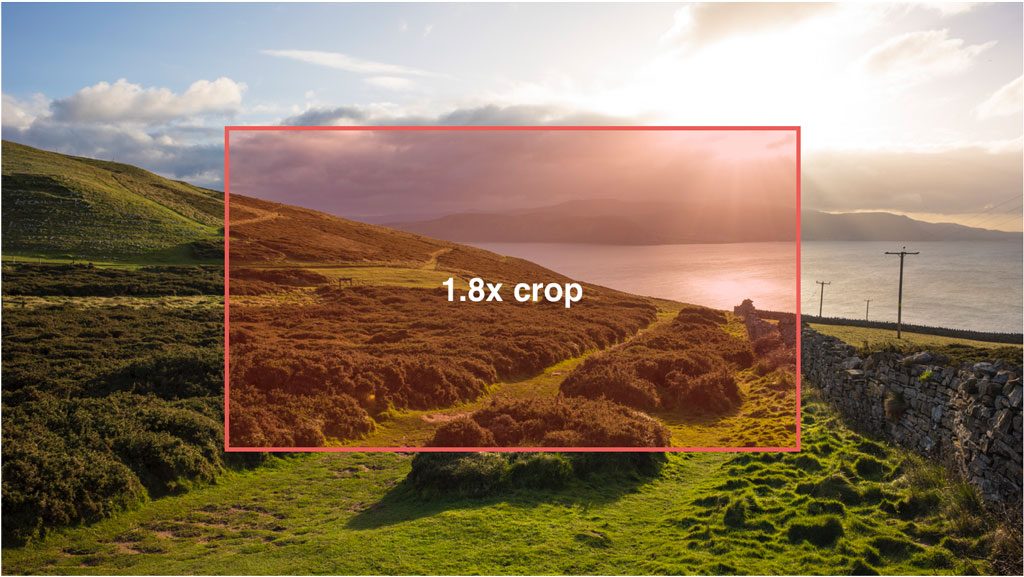
All this sensor crop business can have a big impact on the field of view of your lens. Here is how a 35mm lens looks on the two cameras, depending on their sensor size and settings used.
35mm lens
R7
EOS R
4K 30p
56mm
(APS-C crop)
63mm
(1.8x crop)
4K 60p
56mm
(APS-C crop)
100mm
(APS-C + 1.8x crop)
–
Concerning advanced image settings, the EOS R can record with Canon Log, and you also get a choice of IPB or ALL-Intra codec. Internal recording is limited to 8-bit however.
The R7 doesn’t have the ALL-I option, but you can record in 10-bit (H.265 codec) when selecting C-Log3 or HDR PQ.
Then we have recording duration. The EOS R comes with the old 30 minute / clip limit, whereas the R7 doesn’t have any. Early reviews like the one by Gordon Laing shows the APS-C camera can go up to 1 hour without interruption in 4K 30p at the maximum quality.
Here is another table that summarises all the video specs of these two cameras.
R7
EOS R
4K
60p
30p
Full HD
120p
60p*
Gamma
C-Log3 / HDR PQ
C-Log
Bit-depth
(internal)
8-bit / 10-bit
8-bit
Compression
IPB
IPB / ALL-I
Bitrate
4K 30p
120M (8-bit)
230M (10-bit)
120M (IPB)
480M (ALL-I)
Bitrate
4K 60p
170M (8-bit)
340M (10-bit)
–
Audio in / out
Yes
Yes
Digital Audio*
Yes
No
*Note: the EOS R can record in 120p but the resolution decreases to HD ready (720p).
Digital audio recording is available via the new Multi Function shoe.
3. In-body Image Stabilisation
Another very important difference between these two cameras is the presence of 5-axis stabilisation on the sensor of the Canon R7. It can correct shakes on five different axes (roll, x, y, pitch and yaw) and works in conjunction with optical stabilisation on Canon RF lenses.
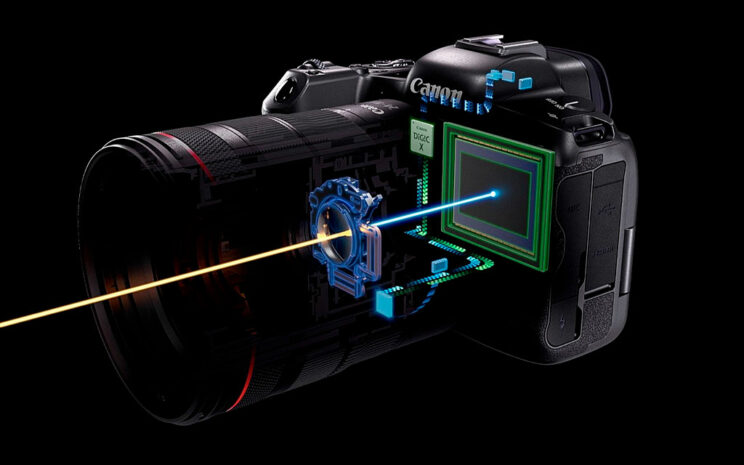
The R7 has a rating of 8 stops of compensation, which is quite high, however keep in mind that the rating varies from lens to lens. For example, it was measured at 8 stops with the RF 24-105mm F4 (full frame lens), but it drops to 7 stops with the RF-S 18-150mm and 6.5 stops with the RF-S 18-45mm.
The stabilisation mechanism works for video too, and you can also add electronic stabilisation (Digital IS) in two steps (Enable or Enhanced).
The EOS R doesn’t have in-body image stabilisation. It was the first model to inaugurate the RF mirrorless mount, but at the time, Canon had yet to include IBIS technology in its products. You can however take advantage of Digitial IS for video, when working with IS lenses.
4. Autofocus and Speed
Both cameras feature Canon’s renowned Dual Pixel CMOS AF, but the R7 comes with the second generation version, as well as more advance software.
While both cameras have face and eye detection, only the R7 can recognise animals and vehicles. Face and Eye AF should also be faster and more reliable, and the APS-C camera can also detect the torso of a person in addition to the face.
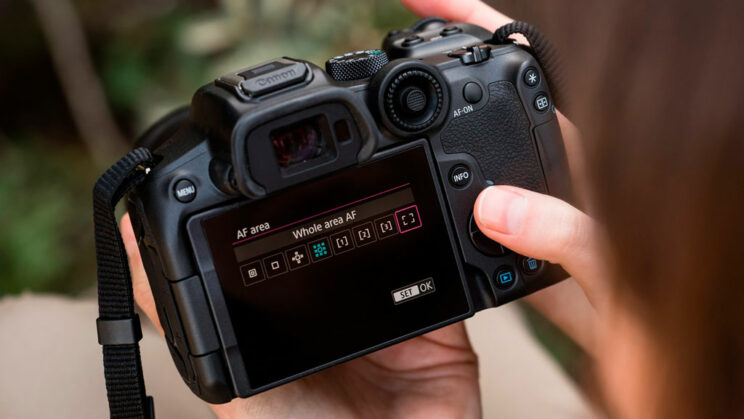
When the Tracking mode is selected, the R7 autofocus works across the entire frame (100% coverage). The EOS R is not far off, using an area that is 100% vertical and 88% horizontal.
The R7 has more AF area modes, including three custom zone settings, and AF Tracking can be initiated from any Zone, whereas on the EOS R, you have to select the dedicated Tracking mode.
Concerning the maximum focus points available (when the 1-point AF setting is selected), the R7 has 5,915 points whereas the EOS R has 5,655 areas.
Then we have sensitivity in low light where the full frame camera has a one-stop advantage (both ratings are measured with an F1.2 lens): -5EV for the R7, and -6EV for the EOS R.
The R model can work in continuous shooting mode up to 8fps, but if you want focus priority, the speed drops to 5fps. These specifications were not impressive back in 2018, they are less so now.
Furthermore, during my time with the camera, I’ve always felt that the processing speed of the EOS R was always a bit behind and not capable of taking full advantage of the excellent Dual Pixel CMOS autofocus system. The lag in the viewfinder doesn’t help either.
Lucklily, Canon has made great progess on this front with its latest models such as the R5, R6 and R3. The R7 seems very promising thanks to the presence of the latest processor, and has speeds that can reach 15fps with the mechanical shutter, or 30fps with the electronic shutter.
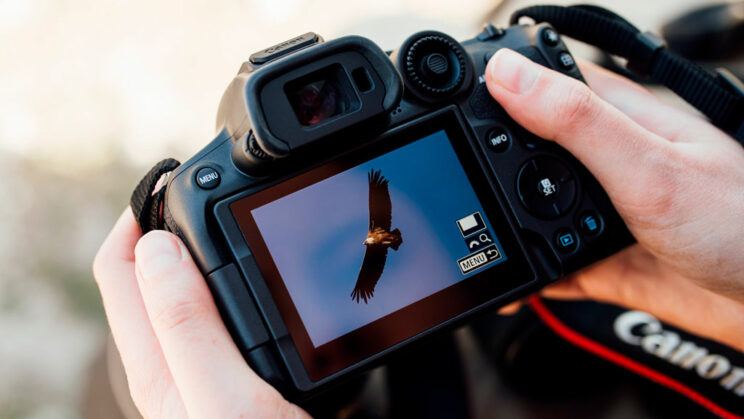
Another interesting addition on the APS-C camera is called Pre-Shooting: when activated, the camera starts to load images in the buffer memory and refresh them every 1/2 second while you half-press the shutter button. When you fully press the button to take pictures, you already have a series of photographs ready to be written onto the memory card. This function is interesting to capture moments that are difficult to anticipate.
Concerning the shutter speed, both cameras can work up to 1/8000s when using the mechanical shutter. With the silent mode (a.k.a. electronic shutter), the R7 can go faster up to 1/16000s.
Finally, a small feature on the EOS R that you don’t find on every Canon camera: Dual Pixel RAW. When working with this format, you can make small adjustments to the bokeh, as well as focus point, when using Canon Digital Photo Professional sotware. This is possible because in this format, the camera records the depth information read by the autofocus system. The changes you can make a really small, but it’s fun to try. Be aware that drive speed is reduced when using this function.

The R7 has a few exclusive features of its own. One of them is focus bracketing and focus stacking (in-camera).
5. Viewfinder and LCD monitor
The EOS R has a larger viewfinder with more resolution, but the refresh rate doesn’t go as fast as that of the R7. The magnification is also slightly different.
R7
EOS R
Panel
0.39-in OLED
0.5-in OLED
Resolution
2.36M
3.69M
Refresh rate
120Hz
60Hz
Magnification
0.72x
0.76x
Eyepoint
22mm
23mm
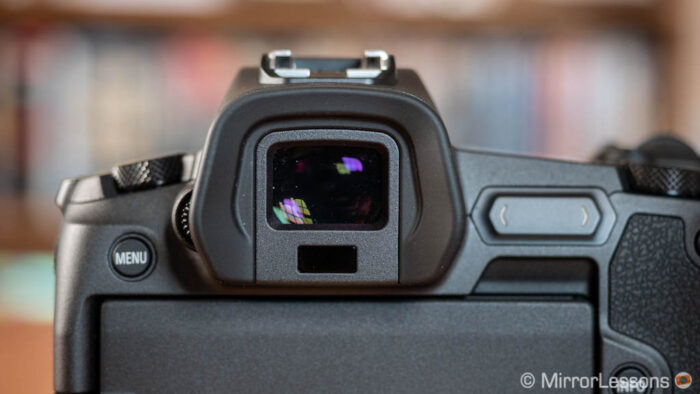
The R7 also has a function called OVF View Assist that “simulates” the optical viewfinder (a kind of HDR mode where brightness increases and exposure preview is disabled).
On the rear, both cameras feature a touch sensitive LCD monitor that allows you to do a lot of things with your finger, from navigating the menu or Quick menu, to starting video recording and moving the AF point.
That of the EOS R is a bit larger (3-15in) and has more resolution (2.1M dots).
The R7 comes with a 3.0-in panel and 1.62M dots.
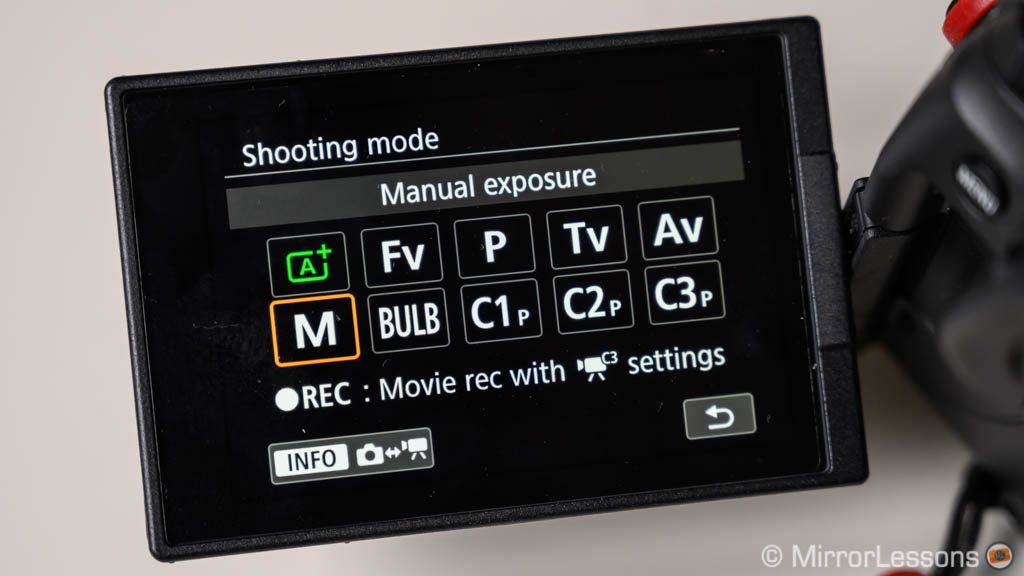
6. Design
The EOS R is a bit larger and heavier than the R7. Both are weather sealed and have a good grip at the front.
- R7: 132.0 x 90.4 x 91.7mm, 612g
- EOS R: 135.8 x 98.3 x 84.4mm, 660g
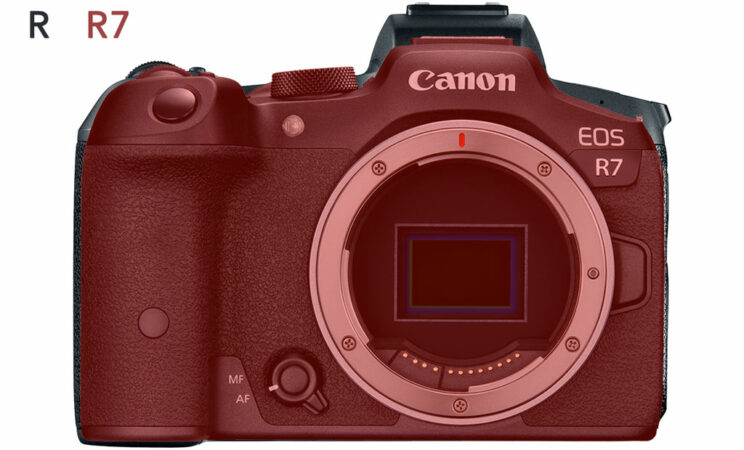
Concerning the button layout and ease of use, Canon has taken a different approach to each.
On the EOS R, you find a small LCD on top to display shooting information. There is no traditional PSAM dial, but you press the M button and then rotate one of the dials to change shooting mode.
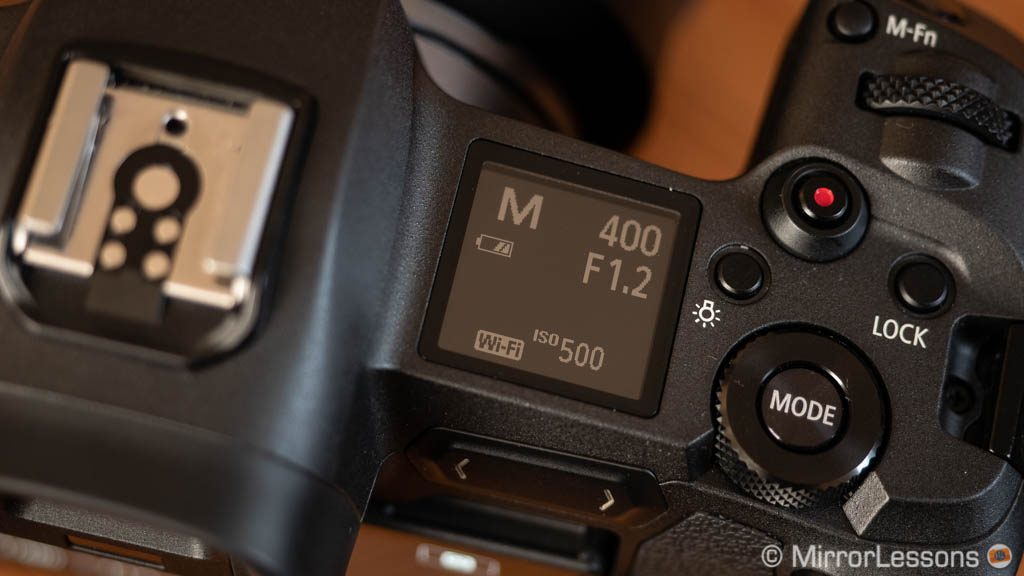
Then there is a curious touch bar on the rear, named M-Fn bar that recognises two gestures. It can be customised with the setting you want (I used it to change the ISO) but it didn’t prove popular so you won’t find it on more recent Canon cameras.
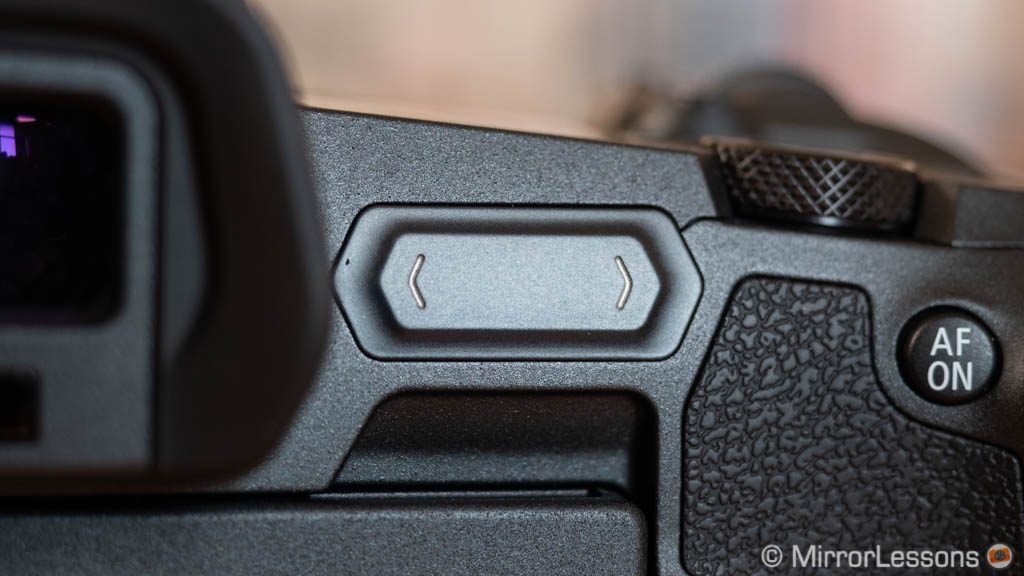
On the R7, there is an AF Joystick (missing from the ‘R’) that is surrounded by a large dial, which is another rather unique solution you don’t see on other cameras. On the front, you’ll find a focus mode switch with a centre button.
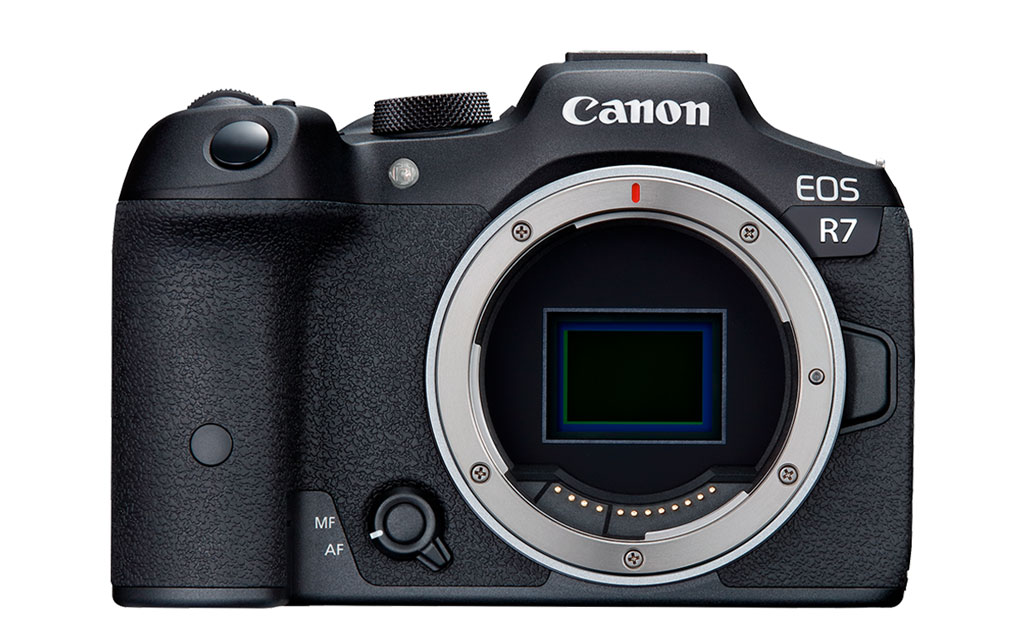
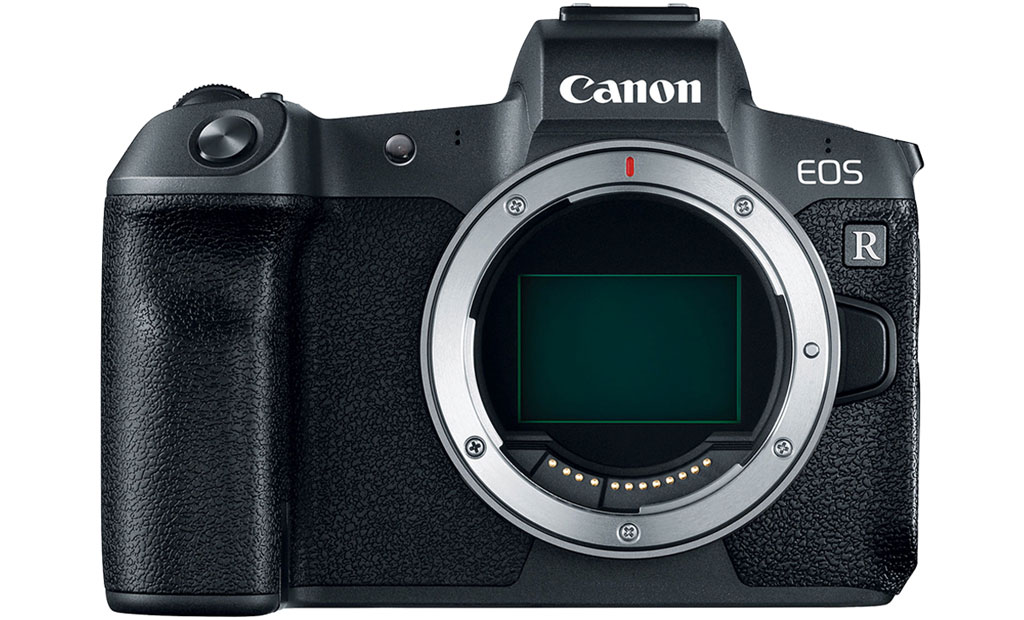
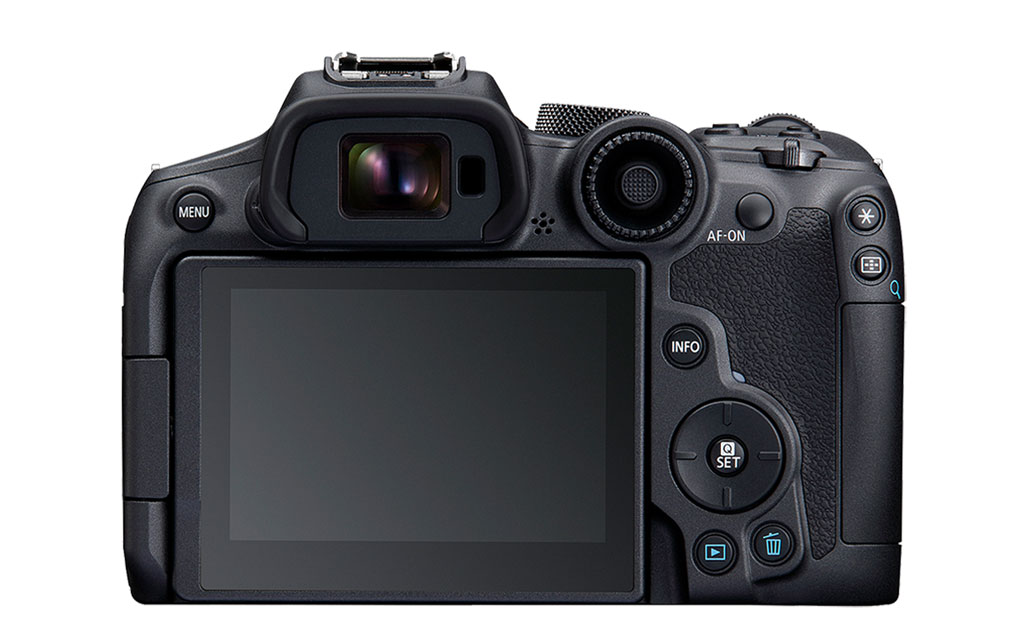
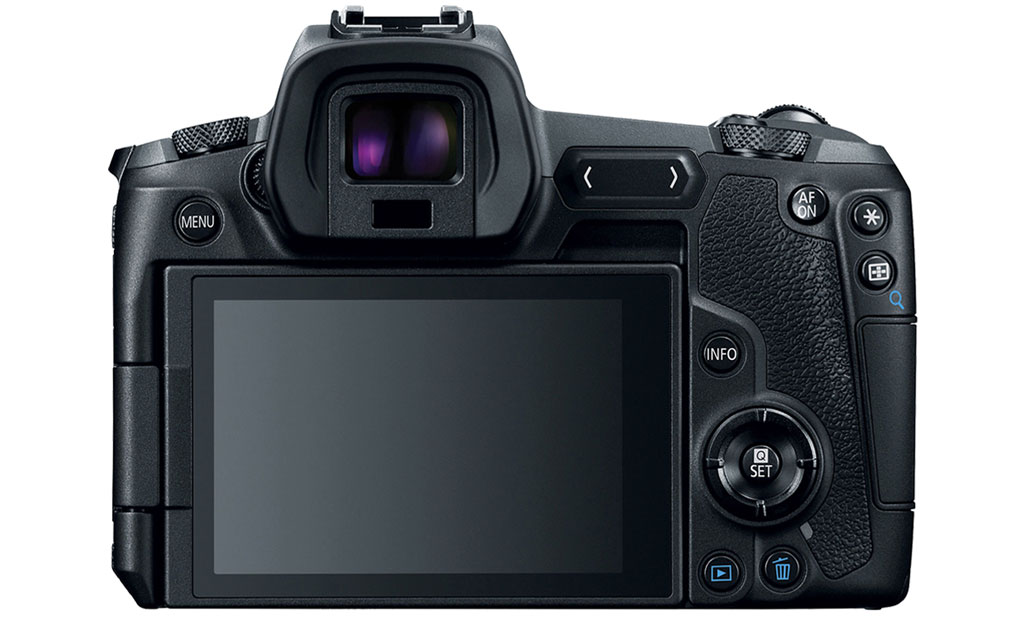
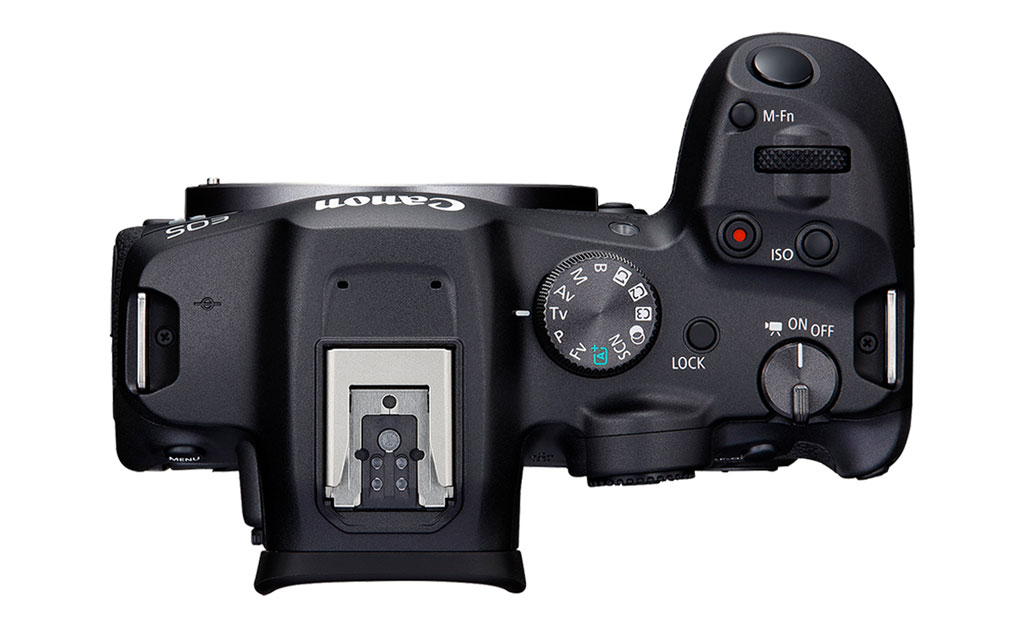
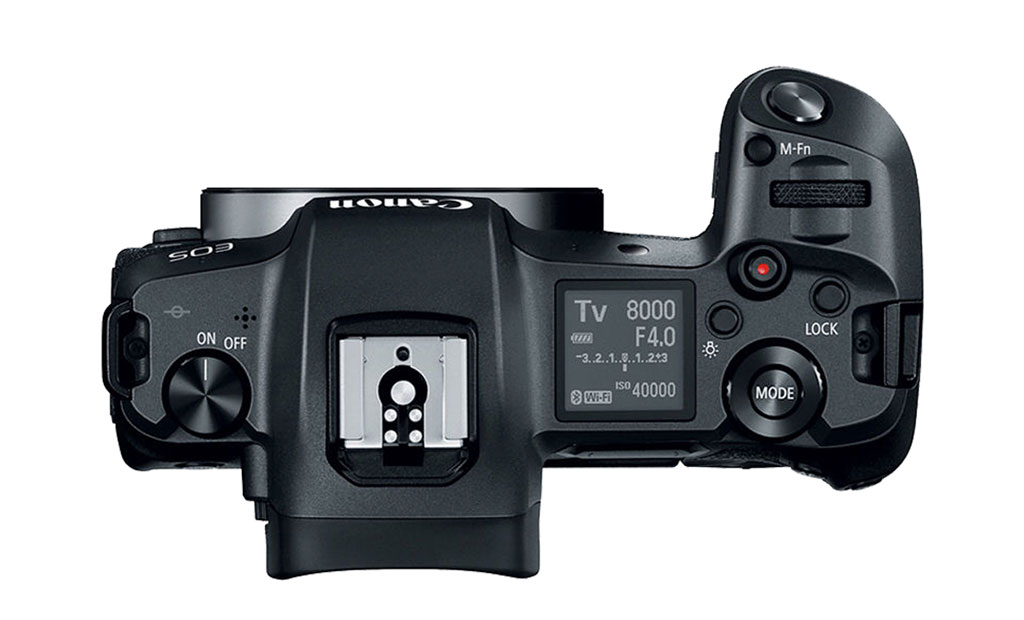
7. Memory cards
The R7 has two memory card slots, and both work with the UHS-II standard.
By contrast, the EOS R has one slot only (UHS-II).
Both cameras have a dedicated compartment for the memory cards, on the side of the body.
8. Battery Life
The EOS R has a battery life rating of 350 shots when using the EVF, or 560 shots when using the LCD.
By comparison, the R7 can manage 500 photos with the viewfinder, or 770 photos when using the rear monitor on its own.
As always, these official figures (CIPA rating) are a mere indication and don’t reflect real world use, where you can achieve better results.
Both cameras accept battery charging via the USB C port, although as usual with Canon products, you need a powerbank that is certified for power delivery (PD).
There is also an optional battery grip for the EOS R, the BG-E22.
9. Lenses
The R7 and EOS R share the same mount (RF), so that means you can use the same RF lens on both cameras. However, the APS-C format is new to this system, which means that, at the moment, there aren’t a lot of native lenses designed for this sensor format. In fact, at the time of writing, there are only two: the RF-S 18-45mm F4.5-6.3 IS STM and RF-S 18-150mm F3.5-6.3 IS STM.
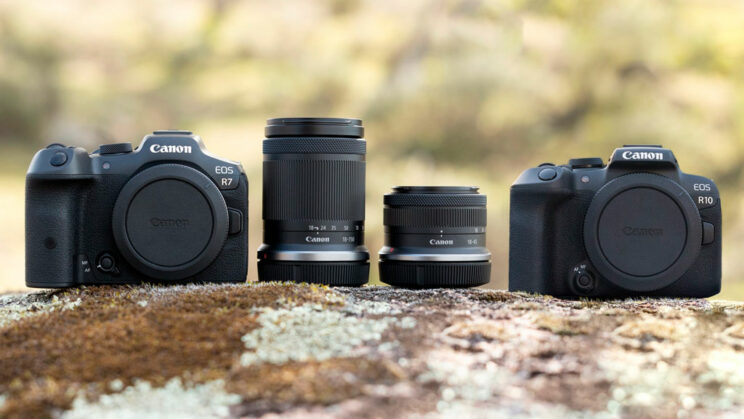
Of course, this will change in the future as Canon is likely to release more RF lenses designed for APS-C, so it’s only fair to give the company some time.
While waiting, there are a few options: use full frame RF lenses, and take advantage of the 1.6x crop factor to get extra reach, while also using the latest technology and know-how Canon has implemented on its more recent lenses.
Or, you can use the EOS R to EF adapter and work with DSLR lenses. Canon has a huge selection of full frame and APS-C lenses, and you also have extra options from third party brands.
10. Price
The R7 was launched with the official price of $1500, £1350 or €1570 for the body only.
At the time of publishing this article, the EOS R price is being discounted in some countries like the US, and can be close to that of the R7: $1600 (body only).
In Europe, the price of the ‘R’ model remains higher (£1650 or €1800 for the body only).
Note: prices are as of late May 2022.
You might also be interested in:
Conclusion
The EOS doesn’t represent the best Canon has to offer when it comes to full frame mirrorless cameras, but if you can find it at a good price (new or second-hand perhaps), it’s worth thinking about it if you’re interested in staying or entering Canon’s segment.
The sensor is not the best you can find but offers good performance overall, and the autofocus is reliable enough for portraits, or even small events. You get the usual advantages of a full frame sensor, and there is no doubt you can bring great images home, especially if you pair it with some of the magnificent lenses Canon has produced for the RF mount (if you have the budget of course!). You just have to accept handicapped 4K video, quirky speed and an EVF lag.
The R7 is much more recent, and incorporates some of the best technology Canon has to offer. The superior speed and more advanced autofocus will attract sports and action photographers, and even nature photographers who want to take advantage of the APS-C crop and get more reach with full frame lenses. The video department also has more to offer. I wish it could have a larger EVF with better specifications, but other than that, it seems like a winner in the APS-C mirrorless category.
Reminder: the links below are affiliate links. If you decided to buy something after clicking the link, we will receive a small commission.
Check the price of the Canon EOS R7 on:
B&H Photo
Check price of the Canon EOS R on
Amazon | Amazon UK | B&H Photo | eBay

